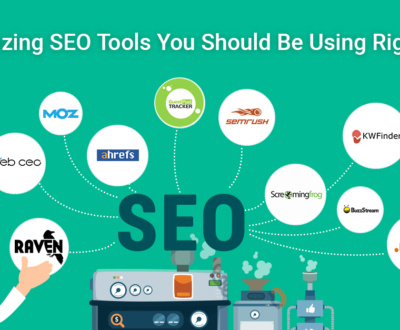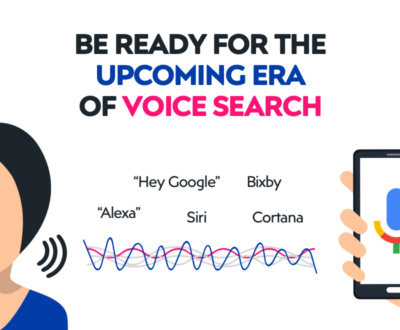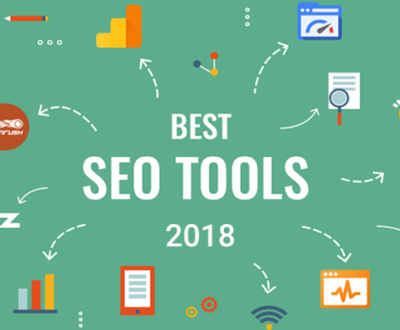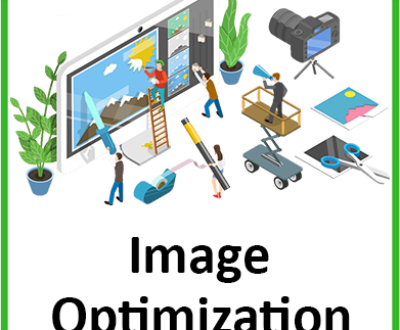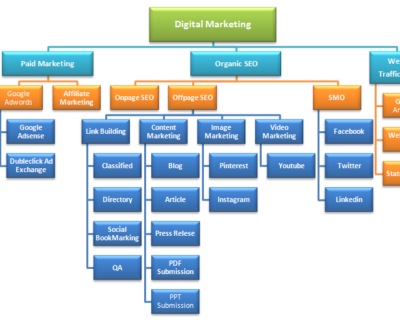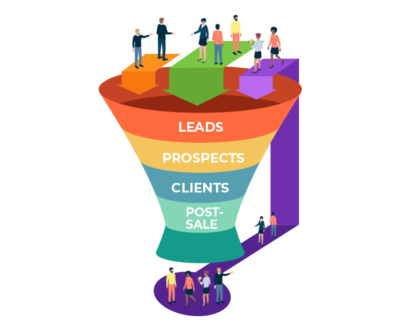What is On Page SEO and why it is backbone of SEO?
If you know about SEO then you will surely know what on-page SEO is (What is On-page SEO). There is no doubt that the Internet is a very noisy market. There are millions of websites and blogs here, while thousands of blogs are created every day. In such a situation, it is really difficult to create a unique identity for your own website. On the other hand, if there is no ranking in the first page of the search engine, it is a big traffic problem. You must be wondering how to increase your blog traffic. On-page SEO is the only weapon for you to rank your website correctly, as well as make it visible on the internet.
Over the years, these “rules” on the page have changed a lot because Google always wants to bring the best results to the viewer. Now, in the canonical search results page, such pages are shown where you might not find the exact match query or keyword in their title tag or meta description.
We are currently dealing with many ranking algorithms among which Hummingbird, Panda, Rankbrain and Semantic etc. is the main in the page. Now, Google is gradually getting smarter. In such a situation, your on-page strategies will also need to be improved.
There are a lot of people who are just starting out blogging but they don’t know anything about SEO and how to put it together.

In a word, SEO is search engine optimization. These are called techniques that if a blogger implements on his websites, he can easily rank his articles on google. And the better your ranking, the more traffic to your blog.
We can now divide SEO into two distinct categories; On-page SEO and off-page SEO.
On-page SEO refers to everything you can do on your website so that it can rank easily in search engines, page titles, internal links, meta tags and descriptions, and more. are the main ones. Off-page SEO refers to all the things you can do outside of your website and thus help you rank high in search engines. Among them, social media, article submission, forum and blog marketing, etc. are the main ones.
That is why today I think why you should be given comprehensive information on what on-page SEO is and how to properly use these on-page SEO techniques in your blog. So without delay, let’s get started.
What is on-page SEO?
On-page SEO (also known as on-site SEO) refers to the many components of a website so that it can be properly optimized.
The aim is to have the pages of the website identified in a way that is visible in the first pages of the search engines and get more traffic. For this, it is necessary to optimize its content, architecture and HTML code.
Every on-page SEO element is under your control in the look and feel of your website. That’s why it’s so important to do it the right way. While on-page SEO refers to both the content and HTML source code of a page, off-page SEO refers to links and other external signals. When both SEO techniques are used in their truest sense, they will definitely help improve your page ranking in Google.
A user stays on a new website for about 8 seconds just to interact with that site. At the same time, the more interactions and interactions, the more users come to your website, the better their experience will be.
If on-page SEO is done to its fullest, you will definitely see an increase in your blog traffic.
On-page SEO includes all the on-site techniques that you can implement on your web pages so that they rank higher in the SERPs.
It uses both content and technical factors to improve on-page quality, so the better you do on-page SEO, the more likely your site is to get more relevant traffic.
By the way, there are various technical aspects of the On Page SEO guide in Hindi that can be optimized, the main ones are:
- Title tag
- Title
- Structure of URLs
- Alt text for images
- Website speed
- Internal Links
- Meta description
- Reaction ability
- On-page SEO techniques
Now tell us about some of the best on-page SEO practices. We can use on-page SEO techniques in Hindi in our article so that we can easily do on-page SEO.
#1 Title Tag
Title tags are HTML elements that you use to name a web page, and they are displayed in the SERPS as a clickable result title. Each title tag must be unique, descriptive, and must provide information about the page and its content, they must also be optimized with a keyword, and their length must be less than 60 characters.
#2 Title
Headers are the headings you give your content, and they should be in H1 format for best results. Titles should always focus more on relevant words and descriptions, above all they should be optimized with keywords so that it doesn’t look like the content at all.
Along with that, you can also divide your content into small sections, for this you can use subtitles (H2 to H6), but be careful not to repeat keywords or phrases too much. in the post.
#3 Structure of the URL
The importance of URL structure increases as search engines determine how relevant a page is to a query, and it should be a bit descriptive depending on the topic of the page. If you want, you can also optimize URLs with keywords, as long as they are relevant.
#4 Alt Text
Alt text or alt text gives search engines more information about images, although it is primarily used to describe images to web visitors who cannot see them.
Therefore, alt text should be very specific and descriptive. For image content, it should be 125 characters or less, and it should only be optimized for keywords or phrases if they are appropriate.
#5 Page loading speed
Page speed is important because slow-loading pages have much higher bounce rates: one survey found that 7% of people want their site to open within 2-seconds, and about 0% just disappear after
seconds. In such a situation, search engines have penalized slow loading pages with lower rankings, so be mindful of increasing your blog page speed.
#6 Internal linking
Internal links, they help your visitors a lot to navigate your site easily, as well as help search engines understand your site and index your pages, so you can easily get what you want. better grade. The least you can do is link every page on your site to its category or subcategory page.
#7 Meta description
Meta descriptions are usually brief but have different descriptions that extend to title tags, which summarize the page’s content and tell people why they should read your content somewhere else. This meta description shows up under the title and URL, it must be limited to 160 characters.
#8 Reactivity
Responsiveness is a design element that ensures your page will display correctly on any device, including mobile and desktop. This will be an even bigger factor as gradually people around the world are using mobile devices for online research.
#9 Keywords
Keywords: The most important factor is keywords. It’s like the eight elements that link your on-page SEO strategy together, they can be combined with all the technical elements so that the right viewer can reach you at the right time.
To make them more effective, keywords will have to be researched and chosen carefully, in addition, they will have to be implemented very naturally in the content so that stuffing problems don’t arise.
The Importance of Content in On-Page SEO
While the technical aspects are important, a very important part of on-page SEO is content, as it is what drives traffic to your website.
By the way, there are many types of this content like:
- Blog
- Copy web pages
- Video
- Infographics
- podcasts
- White paper
- EBooks
- Interview
- Case study
- Initial research
- Tablet
- Educational articles
- Quiz and Pole
Also, it’s also important that viewers don’t like content that requires login, or if it’s copyrighted material, etc.
What is the difference between on-page SEO and off-page SEO?
If you ask any SEO expert, you will only get one answer: for your blog to be successful, you need both on-page SEO and off-page SEO. When it comes to your blog’s search engine rankings, the two work completely differently.
So tell us what is the difference between these two. To understand this, you have to go to a very basic level of how search engines work.
When a search engine evaluates a website, it mainly notices two things about the website.
- On-page SEO This tells what your website (or pages) is about.
- Off-page SEO This shows how authoritative and popular your site is
Simply put, on-page factors are used to know if you want to rank, while you can rank, so you need to use off-page factors.
Off-page SEO is referred to as the set of factors that occur in other web pages that help improve your site’s position in search engine results pages (SERPs).
Some of the key elements of off-page SEO are:
Links on other websites pointing to your website, mentioning your brand on the web User behavior and engagement on your website Social sharing
In off-page SEO, promoting your website on other sites is also considered in a number of ways. For example, link building and social media promotion.
Why is it important to do On Page SEO? Most people only have basic knowledge of SEO, in that they only know how to put keywords on the page in on-page SEO. There is no intersection point that keywords are very important for on-page optimization, but there are many other things that are very important to know and do.
You’ll soon know, in on-page optimization:
- key word
- write
- media
- connection
- User Experience (UX)
- And with conversions.
Understanding and properly implementing all the on-page SEO factors is very important because only then can you rank higher in Google.
How important is a user-friendly website in on-page SEO? On-page elements include both the front-end (content) of your website as well as the back-end (HTML code).
Google’s algorithm tracks the quality and usability of your site, the same way:
- Their crawler bot interacts with the backend and
- This is how real people interact with the forehead
Before moving on to other on-page elements, tell us why a user-friendly site keeps them linked.
You can maintain control over your site, but you can’t control how long users stay on your site. A user-friendly website that encourages human engagement.
If the UI content is not so appealing, user-friendly and relevant, most people will move on to other websites.
So when doing on-page SEO, remember that a user-friendly experience means when someone lands on your site:
They must clearly understand what your website is about. This page must satisfy their search intent or be relevant to them (their search keywords). They will feel that this page is very useful and it will increase the ranking of the page.
What are the main drivers of on-page SEO?
While there are many elements of on-page SEO tips in Hindi, let us know about some specific ones. In fact, these elements can be divided into two parts, first the front-end and second the back-end elements.
Direct factors:
These are known as visible or tangible elements to the user visiting the website. Learn more about them
Value –
Does your article provide value to users? Titles, themes, and images are the main takeaways of these.
User Experience –
Does your website load fast? Is it easy to navigate? Can it be opened easily in any device? Keywords and content – Are your keywords and content optimized for search? In other words, are you using keywords and phrases that users are actually searching for in the search engines?
Key factors:
While on the backend, Google forms opinions based on the relevance of your page, which includes things like:
Crawler Friendly –
Is your data organized in such a way that Google’s search engine crawlers can easily crawl it and know what topics it relates to ?
Metadata –
Do your HTML codes contain information about your page? Such as meta description, URL and title tag etc.
Mobile-Friendly –
Is your website properly optimized for mobile viewing? Is your website design responsive?
Front-end and back-end are very important for a website when it comes to SEO. SEO On Page or SEO Off Page: Which is more important?
It is completely incorrect to say that On Page SEO is better or Off Page SEO, then it has become a thing where the foundation of the house is more important than the roof. On-page and off-page SEO work together and through that, search engine rankings can be improved.
Just as everything has different importance for a house, for the foundation, the roof is also very important. Not only building a house is the end, but maintenance over time is equally important. This is why it is so important to take things seriously in SEO.
Why is on-page SEO important?
On-page SEO is important because Google uses many on-page SEO factors to rank web pages. The most important of these is unique and powerful content. This is because on-page elements are the ones used to attract or engage with users, which will automatically improve your site’s ranking.
How long does it take Google to rank your page?
It can take hours or even months for Google to rank your page. There are many factors behind this, including content quality, crawl budget, page speed, UX design, and more.
What is SEO Score?
SEO score is known as a criterion that tells us how well our website contributes to search engine optimization. That speaks volumes about the technical and user interface aspects of our website. Also, from an SEO point of view, we also know if our website deserves good rankings and better traffic on Google or any other search engine.
What did you learn today?
I hope I have given you enough information about what on-page SEO is and hope you have a good understanding of on-page SEO.
If you have any doubts about this article or want to make improvements, you can write low comments about it. From these reflections, we will have the opportunity to learn something and improve something.
About us and this blog
We are a digital marketing company with a focus on helping our customers achieve great results across several key areas.
Request a free quote
We offer professional SEO services that help websites increase their organic search score drastically in order to compete for the highest rankings even when it comes to highly competitive keywords.
Subscribe to our newsletter!
More from our blog
See all postsRecent Posts
- What are Web Stories and their importance? July 30, 2022
- What are Paid Ads and Advantages of Paid Ads? July 29, 2022
- How Web 2.0 is Different from the Web 3.0? July 28, 2022



